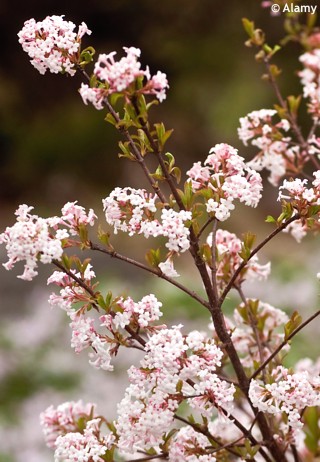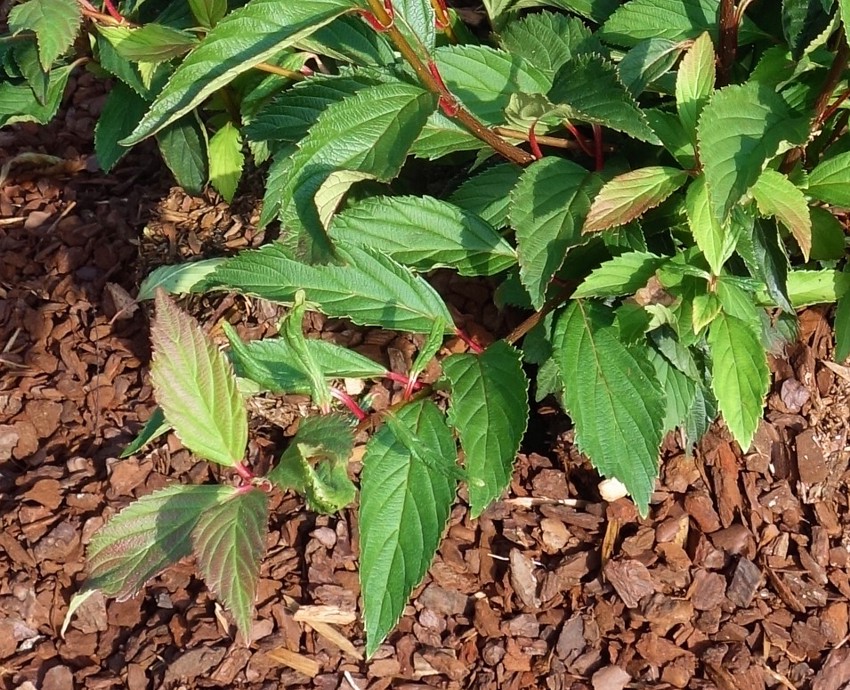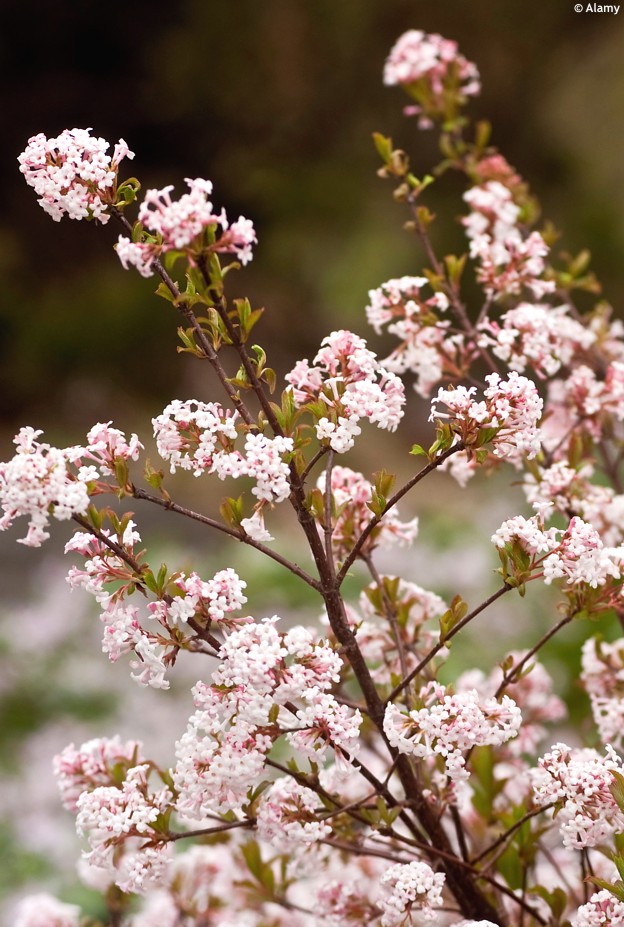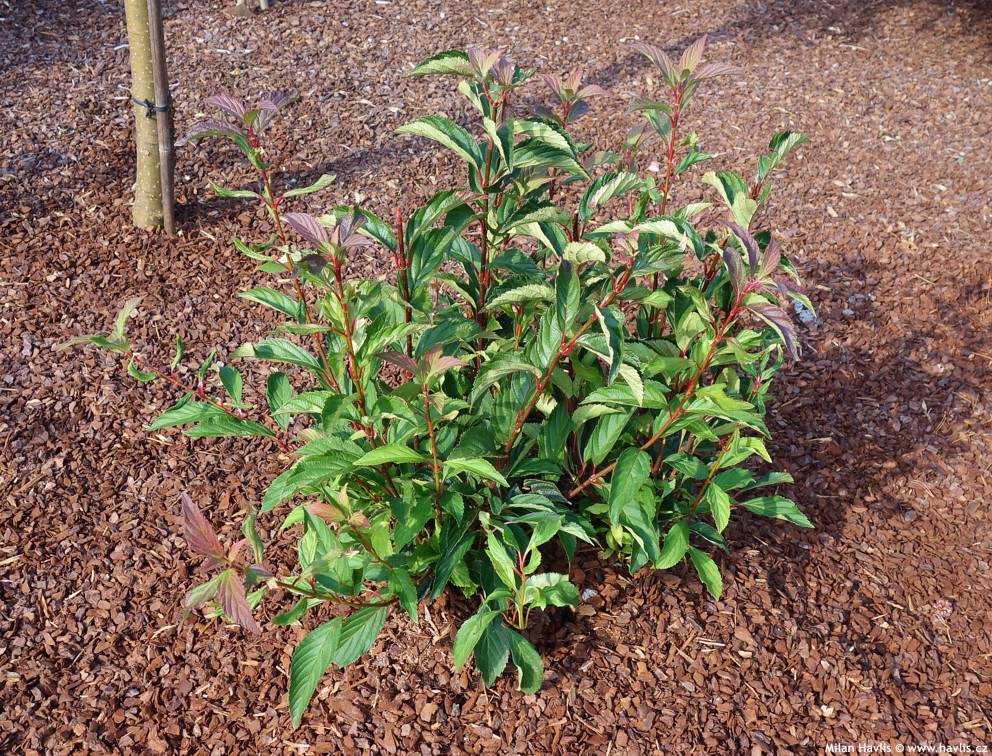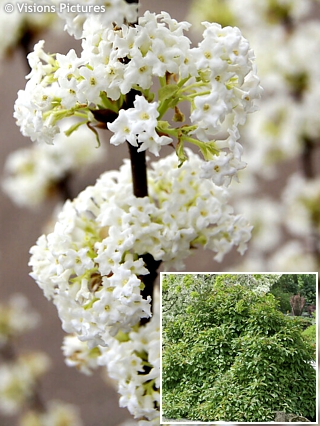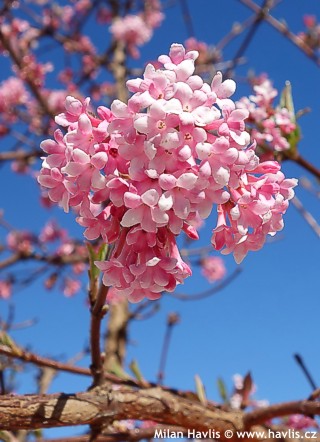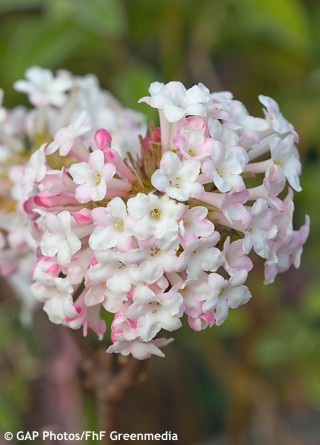Viburnum farreri 'DECEMBER DWARF' Farrer viburnum, fragrant viburnum
Viburnum
Farrer viburnum, or more often called fragrant viburnum belongs to the most fragrant viburnums which produce flowers earliest of all. It comes from North China, and the flowers may appear as early as in December if the winter is late with frosts, or any time during January and February after the frosts have gone and the weather has turned warm for a longer period.
Fragrant viburnum species can make a substantial shrub, however, December Dwarf is only about half its size - about 1.5m tall and a bit less wide. It was bred in Dutch nursery town Boskoop in 1982. Its flowers are small, tubular, pink in buds, pale pink to almost white when they open, intensely sweetly scented, and composed in partially hanging clusters. The inflorescence recall that of Dawn viburnum but is smaller and less spherical.
December Dwarf viburnum makes a handsome shrub even when not in bloom. It has a rounded, compact, bushy habit with upright branches, and nice foliage. The leaves are deciduous, narrowly oval or elliptic, significantly veined, toothed at margins, rich green in summer with some burgundy red hues, and wine red, orange and yellow in autumn. Pruning is not needed to improve branching, but can be done to keep the plant smaller. Prune it just after the blooming has finished before the leaves unfold completely.
Viburnums don't have specific soil needs. This one can even tolerate compacted ground and city pollution. The soil should be reasonably fertile and kept evenly moist for a few months after transplanting, though it can take long periods of drought once established. Grow it preferably in full sun or a very light partial shade to prevent it from losing its shape. Hardy to about -34 °C (USDA zone 5).
Last update 14-11-2018; 25-11-2022

































